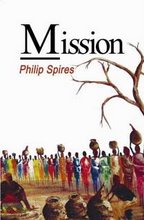In their first concert of a new season, the ADDA Orchestra under the direction of Josep Vicent began with a first performance. Composer Ximo Cano is from nearby La Nucia and his piece Ithaca Overture opened the concert. Ximo Cano’s piece embraces minimalism, but also lyricism and spectacular use of orchestral sound. Basically an overture in the Italian style of fast-slow-fast, it begins with a complex rhythmic figure in the strings which gradually disintegrates into a climax before the central slow section imposes calm on the process. There is extensive use here of the sonorous vibraphone, with the piccolo sustaining some of the higher notes’ overtones. Momentum then reasserts itself, and the piece burns bright until its end. Ximo Cano’s style could be likened to John Adams, but here there is a complexity in this work that comes across paradoxically as simplicity. This world premiere of Ximo Cano’s Ithaca Overture thus presented a perfect opening for a new season, being positive, affirmatory and celebratory.
On seeing the rest of the program, Chopin’s Second Piano Concerto, and Tchaikovsky’s Symphony No. 4, this particular concert goer felt that it might seem like a repetition of works heard hundreds of times before. How wrong can you be? What we heard was both fresh and enlightening. No matter how many times you have heard a piece of music, in performance it always has the potential to surprise anew, and both these works did just that, and to an extent that this listener, with literally thousands of concerts behind him, heard both pieces as if for the first time, so surprising were their effects.
Soloist in the Chopin concerto was Martin García García, a young man still in his 20s from Gijon. To say that his touch was delightful would be to understate the pure artistry he brought to this work. His playing was not only faultless, it reached a level of communication with the audience that one rarely witnesses. Especially in the slow movement, he engendered such a degree of concentration amongst the audience that even the most pianissimo of touches were heard, absorbed within a story that unfolded, told by fingers pressing on keys. This performance rendered a familiar work newly fresh, newly moving and completely satisfying musically. Memorable? Life-changing.
An encore of Tchaikovsky’s October followed. This is Tchaikovsky using understatement, in reflective mode as mists appear and trees colour, and then shed. For the first time I noticed in this piece the main theme of Scriabin’s Prelude And Nocturne For The Left Hand. Another first. I do hope that this first time to hear the playing of Martin García García will not be my last.
And then to Tchaikovsky’s Fourth Symphony. It was for me personally to be the second time in performance in five months. Nothing from the past, however, could have prepared me for the surprise I felt during every moment of this performance by the ADDA Orchestra. Artistic director, Josep Vicent, had the orchestra sculpt literally every phrase. Nuances of feeling, musical details, and indeed overall structures within the work were revealed as if I had never heard the work before, so fresh was the approach, so energised and at the same time subtle was the playing.
Examples could fill a book, but particularly memorable was the way in which the main theme of the slow movement was phrased. It is far too easy, it seems, for an orchestra to rely on the overall beauty of the theme rather than pin down the transitional emotions that make it up. This performance did exactly that. The overall theme still worked fine, but it worked because its individual elements created an emotional journey that was complex and sophisticated, and made perfect sense.
The scherzo, also, provided its surprises. It again is easy to regard the whole movement as a piece of orchestration first and a piece of music second. We all expect to hear the episodic contrast between pizzicato strings, decorating woodwind, and firm brass. What we do not regularly hear in this work of the details that remind us of Slavonic dances, and variations of dynamics in the pizzicato of the strings that add shape and texture. I may have heard hundreds of performances of this work, but this was completely new, as if hearing it for the first time.
As an encore, Josep Vicent offered his audience Guridi’s
Amorosa, a simple plea for people everywhere to share love for one another. The
overall effect of this concert first was to underline yet again the fact that
this ADDA Orchestra, created by the direction of Josep Vicent, is now among the
first rank of world ensembles. Bravi!




